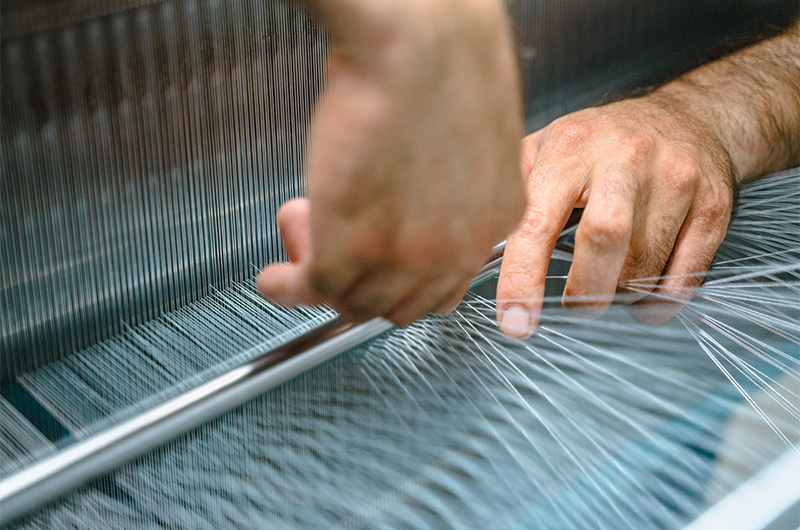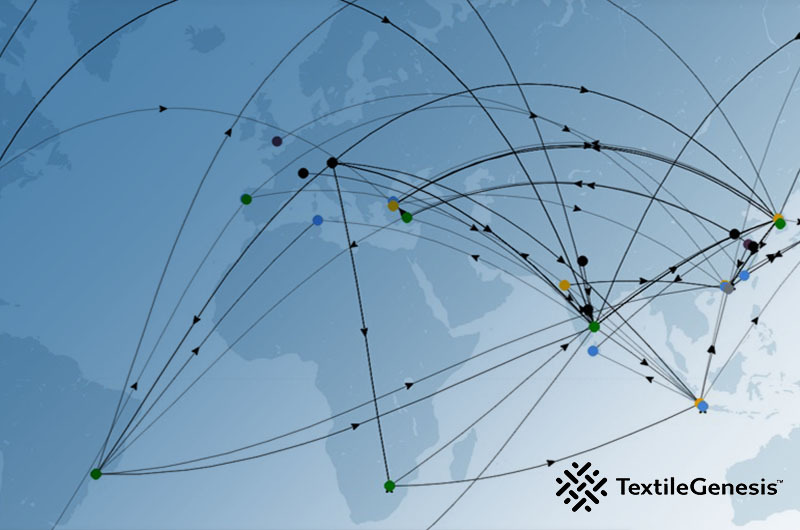Aesthetic appeal of a fabric or garment is embedded in its perceptual characteristics. Among many characteristics are hand, luster and texture. Recent independent studies show that U.S. cotton provides opportunity for making fabric with smoother hand, higher luster and better texture.
All of these characteristics are inherently related to hairiness of fabric, which starts with hairiness and evenness in yarns. The comparative studies of U.S. cotton with non-U.S. cotton yarns and fabrics show that with increasing percentage of U.S. cotton, the hairiness in yarn and fabric goes down and evenness gets better.
These studies were done by different independent consultants in Turkey and India, and they qualitatively and quantitatively show that with increasing percentage of U.S. cotton in fiber blend, the reflectance in fabric made with U.S. cotton-rich yarn has favorable results.
The chart below shows yarn comparison of a U.S. cotton and Brazilian cotton blend in Turkey with different ratios. Both of these cottons are mechanically harvested and saw ginned. The evenness (CVm %) values went down from 17.1 to 16.7 to 16.3 (improvement of 2.34% and 2.4%) and hairiness went down from 6.2 to 5.87 to 5.1 (improvement of 5.32% and 13.12%) as the content of U.S. cotton in blend increased from 36.4% to 47.73% to 59.09% respectively:
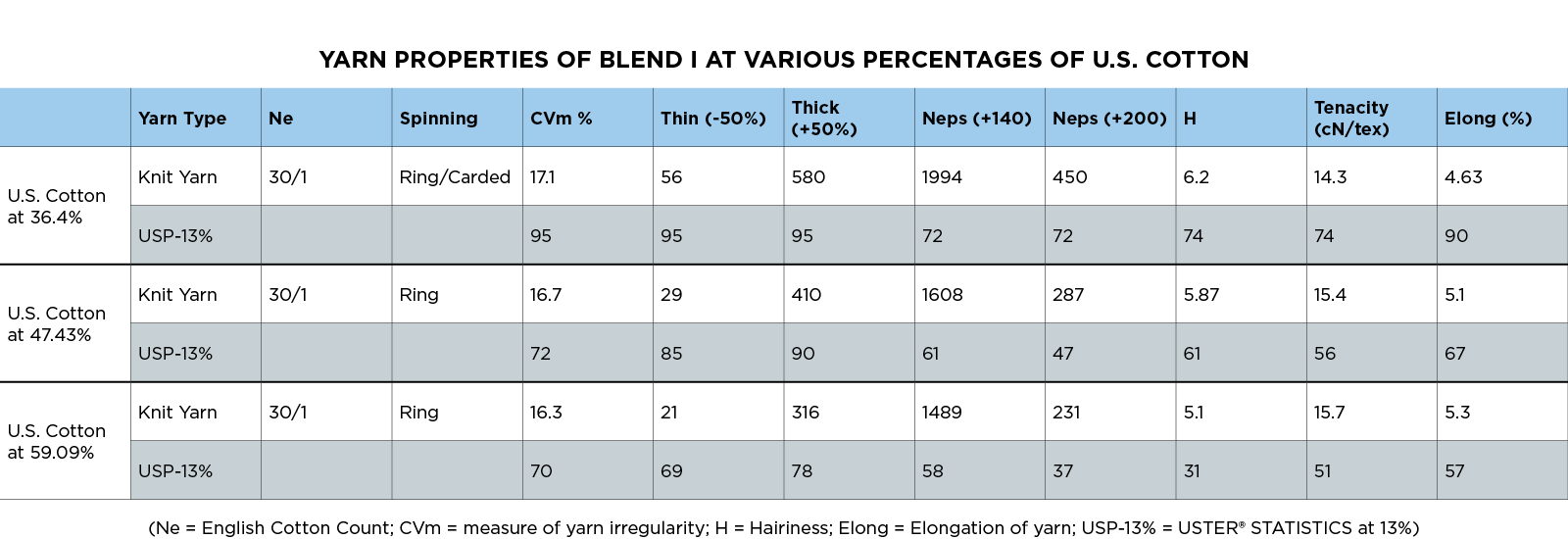
For the same study, the two graphs below visually show the improvements in evenness, hairiness and Imperfections (IPI) with increased percentage of U.S. cotton and also comparative hairiness improvements in bobbin and cones. Yarn cone is the final product of spinning that is used in downstream processes and this significant reduction of hairiness in cone is significant for the quality of yarn.
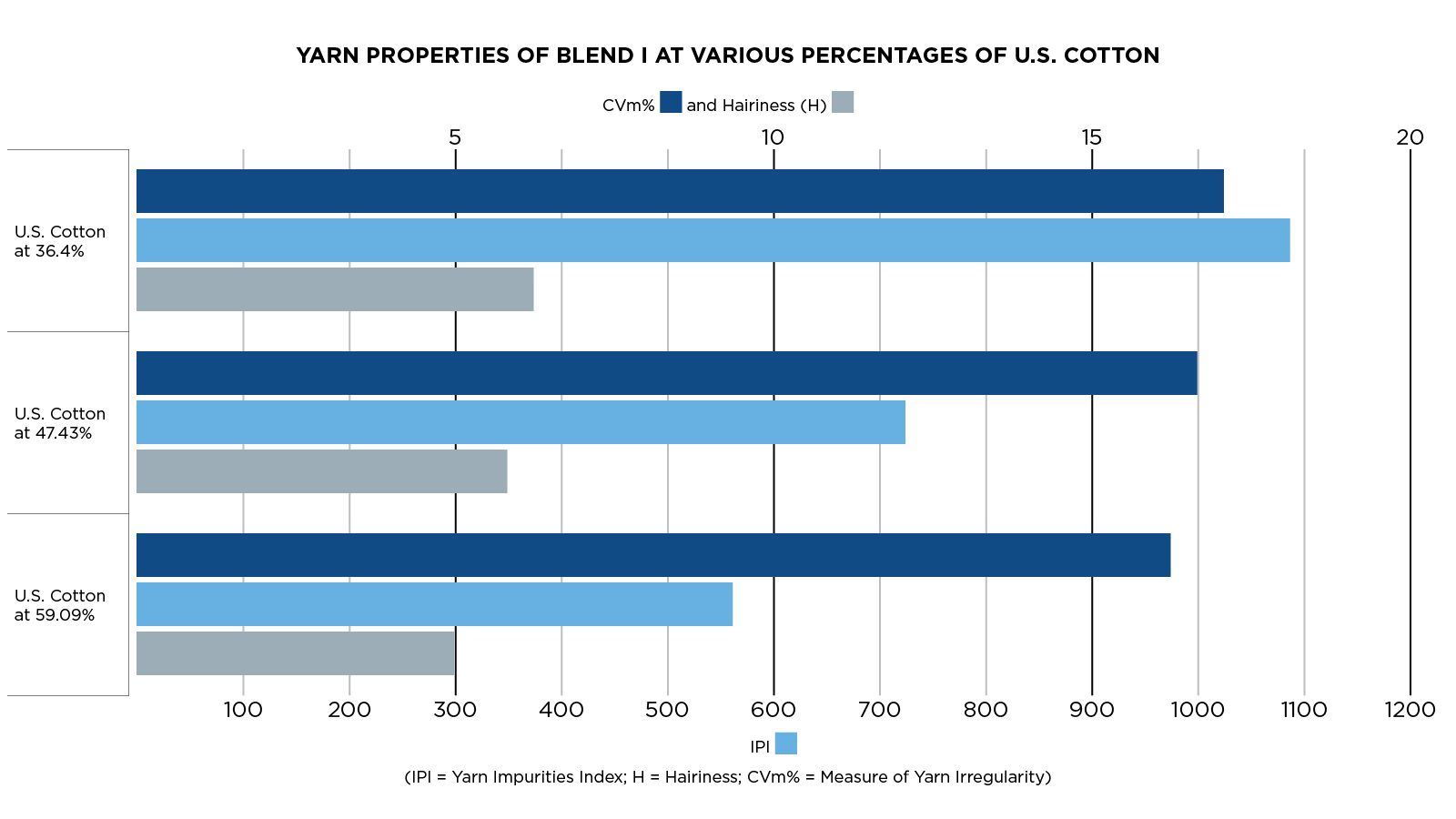

Another blend was also studied in the same experiment where U.S. cotton was blended with Turkish cotton. Unlike U.S. cotton, Turkish cotton is manually picked and saw ginned. Two types of yarns were made in this blend – woven and knit yarn. The percentage of U.S. cotton was incrementally increased from 18.2% to 29.5% to 40.9%.
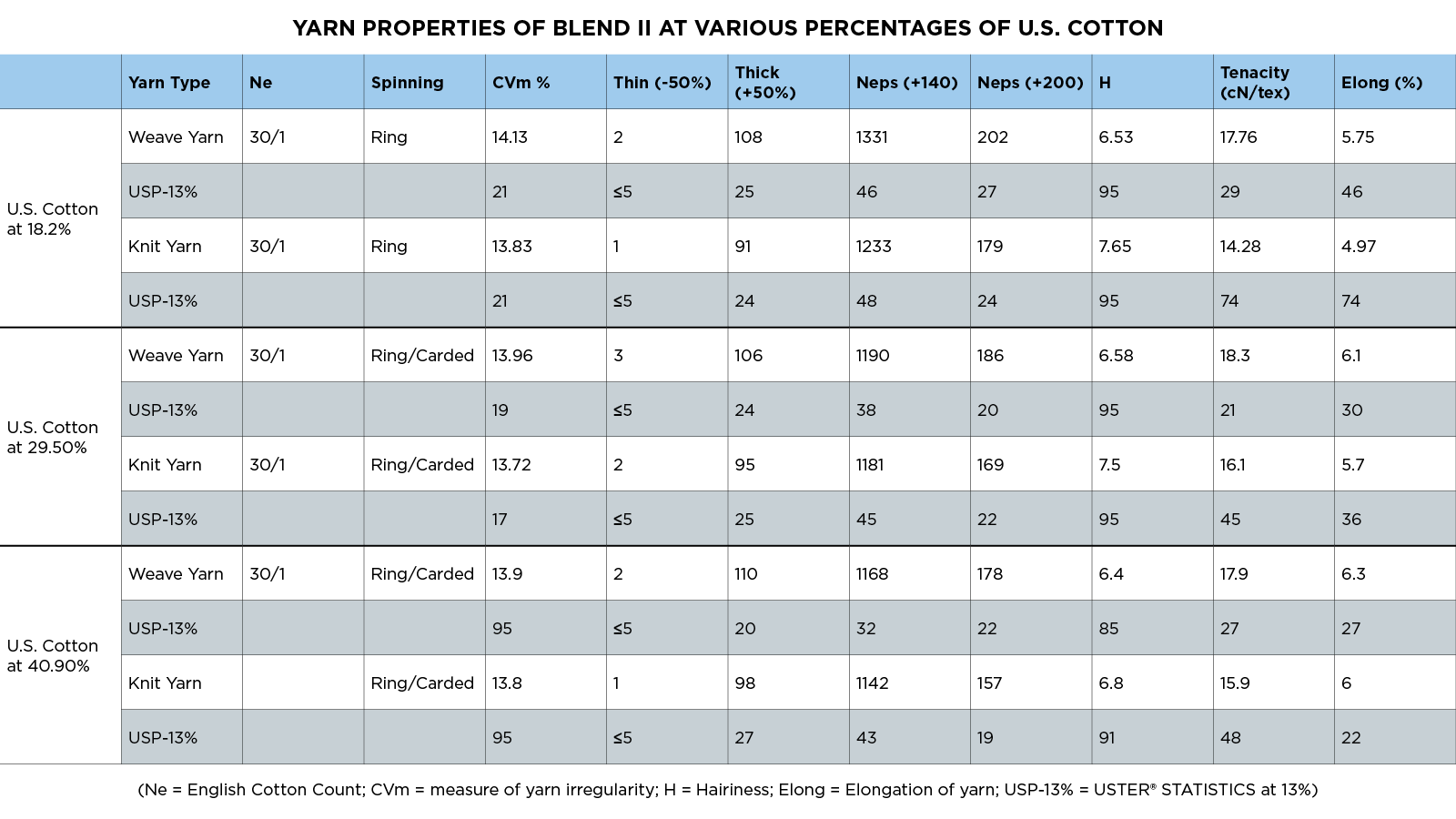
The chart above shows that yarn evenness was marginally better in woven yarn than knit yarn. However hairiness in knit yarn was markedly improved with higher U.S. cotton content. The hairiness in knit yarn went down from 7.65 to 7.5 (1.96% improvement) when U.S. cotton percentage was increased from 18.2% to 29.5% and then it went down from 7.5 to 6.8 (9.3% improvement when U.S. cotton percentage increased from 29.5% to 40.9%. The graphs below visually represent them.


Another study compared U.S. cotton blended with Indian cotton. This study was done in India. Unlike U.S. cotton, Indian cotton is manually picked and roller ginned. The U.S. cotton percentage was increased from 18% to 34% to 51%. The hairiness in yarn remained unchanged when blend percentage went from 18% to 34% but it improved by 5.3% when the blend percentage went from 34% to 51%. The values of Hs was 7.5 @ 18% and remained same at 7.5 @ 34% and then it went down to 7.1 @ 51%
In another study done in India, dyeing and color matching behavior was studied in knit fabric made with 100% U.S. cotton and 100% Indian cotton. The yarn properties chart below shows that U.S. cotton had lower hairiness (7.14) than Indian cotton (7.24) – 1.38% less hairiness.

This less hairiness in U.S. cotton yarn resulted in less hairiness in fabric and better pilling propensity. Less surface hairiness also showed higher reflectivity in greige and dyed fabric and also better brilliance in color when tested under light box and with spectrophotometer.
These results show the relationship of hairiness to aesthetic properties of the fabric and show that fabrics made with U.S. cotton-rich yarns is smoother and crisper due to less hairiness, and better reflectance and higher brilliance of colors.


